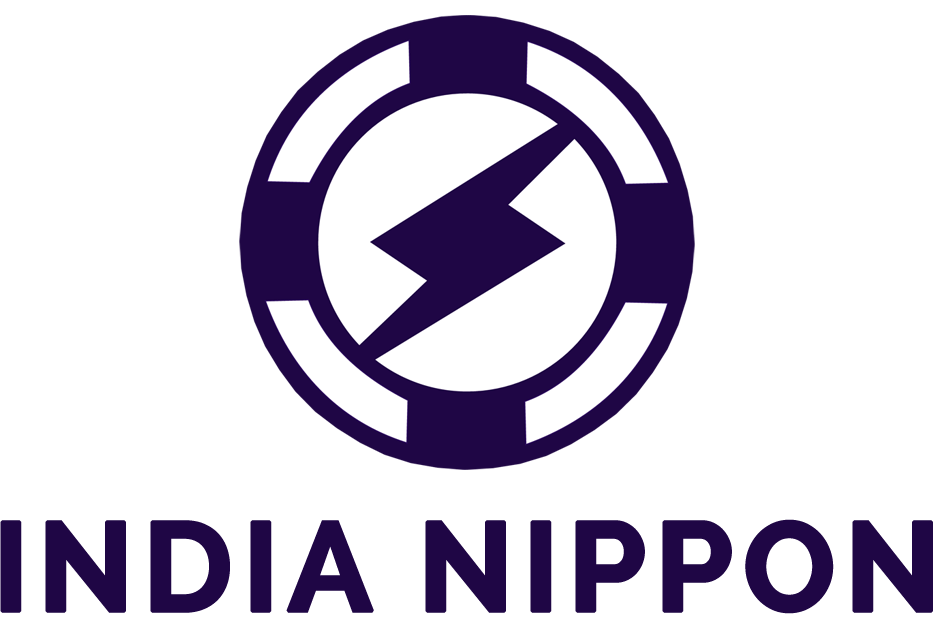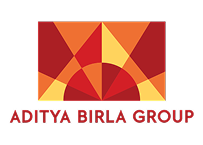Nyla Uddin • November 24, 2025
Understanding auction bidding strategy in 2025

Last update: November 24, 2025

An auction bidding strategy includes preparing a budget, bidding strategically, and keeping a financial record of the data. Traditionally, auctions were held in person, where a group of bidders was led by an auctioneer to reach the highest bid and finalize the deal. But now, with the advancement in technology, we also have online auctions or e-auctions where people can buy and sell goods and services online. And here’s where Procol comes in with its online auction software for faster and competitive bidding. In this blog, we will cover key auction strategies for buyers, the top 15 practical tips for auction bidding, and understanding auction tactics for success.
What is an auction bidding strategy?
Auction bidding strategy is a plan that participants use to determine how they should bid in an auction, in order to maximize their chances of winning the auction at the lowest price they feel comfortable with. Each of the types of auctions will employ a different type of bidding strategy.

Key auction strategy for buyers
Key auction strategies for buyers include thorough research, setting a strict budget, and bidding with confidence. Before the auction, securing financing and knowing your maximum price can be the best strategies to stay prepared. During the auction, be decisive and control the bidding increments to avoid getting caught in a bidding war. Here is a list of the auction strategies for bidders that one should know before and after entering the bidding market:
1. Bid with confidence
When it comes to placing a bid, your behaviour matters as it can influence everybody in the room. If you are confident, calm, and professional, this can create fear in the minds of competitors. Hesitation can also be a signal of weakness and encourage competitors to bid against you.
2. Conduct Proper Research
Take the time to know every aspect of the product, market trends, and what other bidders are doing before bidding in any auction. The more you know about the value of the item being auctioned and which price point the item recently sold for, the more it will build your confidence to bid and help you avoid overpaying for the item. Corporations like Procol can even help provide market reports and data to help you make better-informed decisions.
3. Determine Your Sense of Limits
Know your budget and stick to it. Many bidders crossed their limit trying to prevent other competitors from potentially winning in the excitement of a live auction. You can eliminate this potential bad habit of overbidding by clearly establishing limits and staying disciplined throughout the auction if a bidding war should arise.
4. Utilize Technology
Current bidding platforms, including Procol, offer features that bolster decision-making through real-time analytics, historical data, and predicted insights. Technology helps you track price changes and make sense of patterns while bidding strategically (rather than reactively).
5. Know the Timing
Timing is critical to your auction bidding strategy; it can make or break your strategy. Do not bid early; it will only increase the competition for you. Observe the auction strategy and activity, and lobby for when the auction activity slows down. That is when to think strategically about your bidding.
6. Avoid a bidding war
To avoid a bidding war, set a maximum price before the auction, and then stick to it. You also start to bid early, waiting till the end, which is a strategic approach, not getting emotional, and ultimately, the best auction strategy is knowing when to stop bidding and walk away to avoid overpaying. A bidding war is mainly caused by ego clashes, so have a thought in the back of the mind to walk away when things get out of hand.
7. Use a Proxy or Automated Bidding Feature
If you’re unable to observe an auction live, you may use a feature to proxy bid that is offered on a site like Procol. During a proxy bid, you would set a maximum bid limit, and the feature will provide you with a bidding component that raises your bid automatically in small increments to keep your bid in live status without any involvement or observation from you.
8. Reflect on Your Auctions
With each and every auction you participate in, you will learn something different that will help you in future auctions. Evaluate what worked and didn’t work. Did you bid too high? Did you wait too long to bid? Self-evaluating your bidding process will enhance your bidding process each time in the future until your bidding process refines your level of efficiency and assurance.
9. Observe before bidding
Crucial bidding techniques for buyers include preparation (due diligence, financing, and walking away price), observing other buyers to identify competition, strategic bidding (timing and increments), and emotional control when bidding to ensure a bidding war does not happen.
For auction buyers, there are three essential concepts to keep in mind: preparation, emotional control, and bidding strategy. First, it is critical to set a firm budget and do thorough research before setting foot in an auction. Next, during the auction itself, tactics like confident or incremental (or friendly) bidding can work well. But the ultimate power is being willing to walk away.
Top 15 auction bidding strategies in 2025
Preparation, a plan, and rational behavior are all required in auction bidding to win and not overpay. Here are 15 auction strategies for bidders or tips for auction bidding that will help you bid better at live auction bidding, online, and sealed-bid auctions.
1. Research
If you want to purchase an item, know the market value, condition, and history. For real estate, know what comparable sales have occurred in the area. Look at past auction prices for items similar to the piece you want.
2. Bid confidently and sanely
When you make a bid, be loud and clear, or present your paddle clearly and confidently when you are ready to bid. If you hesitate or remain cautious in how you approach your bid, it can signal to the other bidders that you lack confidence or have otherwise hit your limit, which may encourage them to continue bidding.
3. Have an absolute price
Decide the limit or maximum price you are willing to pay before the auction starts. Your price should include the final bid, buyer’s premium, taxes, and shipping. If you exceed a limit, leave it.
4. Be in a favorable environment
At an auction, be in a spot where the auctioneer can see and hear you easily. Look for a place where you are able to see how other bidders are reacting and what their body language looks like.
5. Know the auction type
The auction style or auction strategy will affect what kind of strategy you develop. A live auction allows you to see what other bidders are doing. An online auction means constantly monitoring. A sealed bid auction means you only have one shot at a strategic bid.
6. Be aware of the costs
Understand all of the fees beyond the hammer price, such as the buyer’s premium (often 10–25% of the bid), sales tax, and shipping, which can add up quickly.
7. Make an early, strong bid
Some experts suggest making your first bid early and being bold about it. This can show you mean business, and auctioning can follow your lead. In addition, by being the first bidder, you may disrupt the methodical process of other bidders.
8. Inspect the item
Just as you would want to see the piece you are bidding on at an auction preview, if the item is available online, look at the photos very carefully, and ask for additional details on imperfections if you are jumping in.
9. Keep your expression neutral
You will want to keep your feelings and body language in check. Do not show enthusiasm or disappointment on your face. A steady and calm demeanor conveys confidence and a deep pocketbook.
10. Be prepared to negotiate
If an item is passed because the reserve price was not met, you can negotiate with the seller after the auction.
11. Do not burn the bridge
Win or lose, keep a respectful relationship with the auctioneer. Cultivating relationships with auction houses may lead to future opportunities to learn about auction events or market trends.
12. Pay attention to competitor bidding behavior
Keep a close eye on your competitors to get a feel for their bidding behavior. If someone is aggressive in their bidding, they are likely very close to their limit. If someone is careful in their bidding, they may be bluffing. You can use this information to time your bids and know when to go all in or pull back.
13. Consider proxy bidding
Proxy bidding is when you set a maximum bid that relieves the bidder from experiencing distress. It is helpful to relieve you from being impulsive in decision-making and dealing with the frantic nature of final bidding periods. Either way, keep your eye closely on it as it is still your responsibility to ensure you do not exceed your allowance for that item.
14. The importance of timing your bid
In a live auction, try to place your bid just after someone has bid or in a period of silence, preferably just before it ends, as you want to keep the price down as much as possible and not have someone rush in to bid after you. In an online auction, “sniping” is a style of bidding at the very end of an auction in anticipation of no time for the other bidders to respond. You will still win the item, but you do not want to entice competing bidders.
15. Attempt to keep your emotions out of the bidding process
Although the auction process can be exhilarating in nature, bidding based on your emotions may lead you to overspend. Stick to your predetermined bidding decision, budget, and strategy regardless of what others do. Allow yourself to enjoy the auction experience and keep a level head about your bidding.
Steps to Bidding Online
1. Explore the auction and item
Before proceeding, investigate the auction platform and the item of interest. You should know the market value of the item, its condition, and associated fees. If the auction does not provide photos, or if possible photos are inconclusive, you should also consider asking the auctioneer for more information before bidding to confirm the item is what you expected.
2. Set your budget
Set the maximum price you are willing to spend. In addition to the item price, take into consideration some of the additional costs you may incur from the auction. Once you have set that price limit, do your best to stick to it, as you can become “emotionally engaged” and get drawn into bidding more than you anticipated.
3. Register
Open an account at the auction platform. In most cases, you will need to provide your contact information, payment method, and acceptance of the auction platform’s terms and conditions. Make sure you open, confirm, and set up an account before the experience in the auction.
4. Monitor the auction
Follow the auction to keep updated on the timeline and the changing prices. Most online auctions will provide a countdown time, and it is good to follow the auction item and be aware of its price. If the auction provides a “watch list” or notification to the auction action, use those options to continue your interest in the auction.
5. Bid on the item
When you are ready, bid on the item. Online auctions create a bidding interface that allows you to place your bid in the moment. Also, remember to bid with confidence and clarity. If the system allows for proxy bidding (automatic bidding), established prior to the last minute, you will not even need to bid yourself.
6. Set proxy bidding
If the auction platform allows for proxy bidding (the system will bid for you), set and enter your maximum bid ahead of time when you are qualified. And the system will continue bidding in increments on your behalf until your maximum bid is met. This will help you avoid becoming emotionally attached to a bid, and it will help you from irrationally bidding far higher than you intended in the moment.
7. Anticipate last-minute bidding
Online auctions can get intense in the last few moments. If you do not want to be outbid, you can place a manual bid just seconds before the auction closes or use a sniping tool, which is a service that will do it for you.
8. Confirm your winning bid
Once you win, confirm the terms of the auction and understand the payment instructions. Some auction platforms will send you notifications on how to pay. Pay for the item in a timely manner, and keep records of all transactions.
9. Payment and delivery coordination
After winning, be sure to pay for the item according to the methods of payment the auction site requests. When your payment has been received, coordinate any shipping or pickup of the item as outlined in the auction.
10. Upon delivery, inspect the item
Once the item has been received, practice due diligence by examining or inspecting the item to ensure it was as described and matches any listing photos. If there are problems with the item upon receipt, make sure to notify the auction house or seller of the item immediately regarding the issue encountered.
Reverse auction procurement strategy and procurement insights with Procol
Organizations are increasingly utilizing digital solutions to enhance efficiencies, increase transparency, and create savings. Reverse auctions are one method leading the charge in redefining procurement processes, where suppliers competitively offer their best pricing on goods and services that are beneficial to the buyer. The Procol platform has transformed planning for reverse auctions by providing intelligent, data-driven capabilities, allowing procurement teams to conduct reverse auctions quickly, smarter, and more strategically.
Procol’s technology makes this process simple with ease of use and offers procurement teams a single source for managing suppliers’ bidding participation, auction bids in real-time, and comparing offers. The transparency built into the process allows for fair competition, improves decision-making, and helps gain optimal value without sacrificing quality.
Procol’s procurement platform also fixes manual errors, shortens sourcing timelines, and provides compliance in the procurement process.
Fundamentally, by utilizing Procol’s reverse auction approach, firms can not only deliver extraordinary cost savings but also create an agile and competitive procurement platform.
Case study on Pulcra Chemicals India Pvt. Ltd.
Pulcra Chemicals India Pvt. Ltd. is a specialty chemical company serving the textile, leather, and fibre industries with a wide supplier base and recurring sourcing requirements. Their procurement needed speed, transparency, and trust due to frequent vendor negotiations.
The challenge was that manual processes slowed down event creation, limited bidder participation, and made comparison difficult. Lack of open price visibility also reduced confidence among suppliers and impacted savings.
Procol implemented eAuction Pro, enabling one-click auction creation, real-time bidding, 45 algorithm-based saving strategies, and automatic suspicious bid detection. Participation increased, transparency improved, and approvals became faster through a custom Note for Approval (NFA) feature.
Conclusion
To bid successfully at auction requires thorough preparation, auction bidding tactics, and financial discipline. A successful strategy involves in-depth market research and tactical strategies, such as bidding with confidence and knowing the limits of your competitors. In both traditional and reverse auctions, the objective is not simply to win but also to buy the item for the best price. Leaving when you need to is just as valuable as knowing when to bid. In the end, the most effective approach is combining factual data, timing, and discipline.

Frequently asked questions
What is the 10-minute rule at auction?
The 10-minute rule prevents last-second bids from ending an auction abruptly. If a bid is placed within the final 10 minutes, the auction automatically extends by another 10 minutes. This gives all participants a fair chance to respond and ensures competitive, transparent bidding until no new bids appear.
What is the best strategy to win at an auction?
To win, research the item’s value and set a strict maximum bid before the auction starts. Stay calm, avoid emotional bidding, and bid strategically near the end. Observe competitors’ patterns and act confidently. Knowing when to stop is crucial; discipline often wins more than aggressive bidding does.
Is it better to bid early or late in an auction?
It’s generally better to bid late. Early bids can reveal your interest and drive prices higher. Waiting allows you to assess competition and bid strategically at the right time. However, monitor closely to avoid missing the deadline, especially if the auction has an automatic extension rule.
What is an online auction?
An online auction is a digital marketplace where participants bid remotely via the internet. Bidders compete in real-time to purchase goods or services, often within a set timeframe. It offers convenience, global access, and transparency, allowing buyers and sellers to interact efficiently without needing a physical auction venue.
Schedule a Demo
We’d love to hear from you. Please give us a call on +1 (209) 305-4922.
Explore more from Procol
Discover expert tips, how-to guides, industry insights, and the latest procurement trends.

Procurement stakeholders: identification, engagement & management
When you’re leading a procurement project, you’re responsible for every decision,...

What is spend management? | Importance & best practices
If you’ve ever looked at your company’s monthly expenses and wondered...

Streamline your sourcing process with eRFx software
Organizations are embracing tools for digital procurement, such as eRFx, to...








